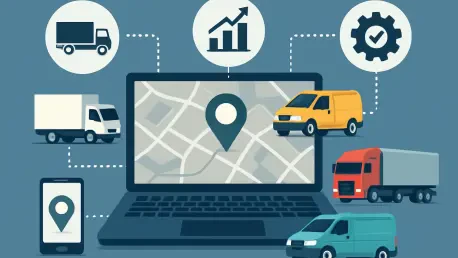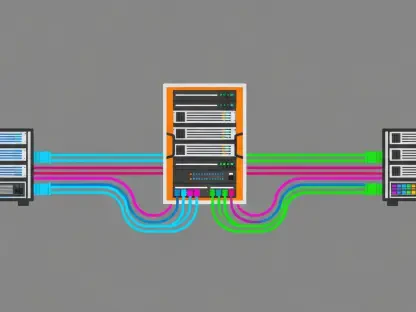In an era where fleet management faces increasing pressure to optimize efficiency, reduce costs, and ensure safety across diverse sectors, a groundbreaking solution has emerged to tackle these challenges head-on. Fleet operations, whether in school transportation, sanitation, or utility services, often grapple with fragmented systems and outdated technology that hinder real-time decision-making and inflate operational expenses. Enter a new platform from a leading innovator in commercial vehicle solutions, unveiled late last year from their Seattle headquarters. This cutting-edge, cloud-based system promises to revolutionize the industry by unifying disjointed workflows into a seamless, data-driven experience. Designed to empower managers with actionable insights and unparalleled connectivity, it addresses longstanding pain points with a forward-thinking approach. As fleets across the Americas seek modern tools to navigate complex demands, this innovation stands poised to redefine how operations are conducted, setting a new benchmark for performance and safety.
A Unified Approach to Fleet Operations
Fleet management has long been plagued by inefficiencies stemming from siloed data and cumbersome legacy systems that fail to provide a cohesive view of operations. The newly launched platform introduces a transformative “single-pane-of-glass” interface, consolidating critical information from vehicles, drivers, and assets onto one high-resolution map. This unified perspective eliminates the frustration of navigating multiple tabs or systems, allowing managers to monitor activities in real time with unprecedented clarity. By integrating proprietary data with external sources through a flexible, cloud-based architecture, the system ensures that every piece of information is accessible at a glance. This streamlined approach not only saves time but also enhances the ability to respond swiftly to emerging issues, such as vehicle breakdowns or route deviations. For industries managing diverse fleets, from school buses to utility trucks, this represents a significant leap toward operational cohesion and improved oversight.
Beyond the visual consolidation of data, the platform’s integration-ready framework marks a pivotal shift in how fleets can adapt to specific needs. With an open API, it seamlessly connects with third-party sources and incorporates advanced artificial intelligence modules for a tailored user experience. This adaptability means that whether a fleet requires detailed fuel usage analytics or customized safety alerts, the system can evolve to meet those demands. Real-time analytics, powered by market-leading hardware like telematics control units and compliance tools, deliver over 30 detailed reports and personalized dashboards. Key performance indicators on route efficiency, driver behavior, and maintenance needs are readily available, enabling proactive decision-making. This level of customization and insight helps reduce downtime and operational costs, positioning fleets to tackle challenges with agility. The emphasis on connectivity ensures that managers are no longer bogged down by disconnected tools but are instead equipped with a holistic solution.
Driving Efficiency Through Actionable Intelligence
One of the most compelling aspects of this innovative platform is its ability to turn raw data into actionable intelligence that directly impacts fleet performance. By synthesizing information from various sources, including driver behavior monitoring and live alerts for issues like speeding or idling, it provides managers with the tools to address problems before they escalate. The system’s real-time diagnostics support proactive maintenance scheduling, ensuring vehicles remain operational and costly breakdowns are minimized. Detailed insights into fuel consumption and route optimization further contribute to reducing expenses, a critical concern for fleets operating on tight budgets. For sectors like sanitation or school transportation, where safety and reliability are paramount, these features offer a way to enhance both operational efficiency and public trust. The focus on preemptive action transforms how daily challenges are managed, paving the way for smarter fleet operations.
Equally important is the platform’s capacity to deliver personalized insights that cater to the unique demands of different fleets. Through comprehensive reporting and live notifications, managers gain a deep understanding of performance metrics that matter most to their operations. Whether it’s tracking emissions compliance for regulatory adherence or monitoring student rider safety in school transportation, the system provides targeted data that informs strategic decisions. This level of granularity empowers fleets to not only meet current needs but also anticipate future challenges, ensuring long-term sustainability. By mitigating risks through informed interventions, such as driver safety training integration, the platform fosters a culture of accountability and continuous improvement. This data-driven approach redefines traditional management practices, replacing guesswork with precision and enabling fleets to operate at peak efficiency across varied applications.
Setting a New Standard for Industry Innovation
The introduction of this platform reflects a broader industry trend toward consolidated, technology-driven solutions that replace outdated systems with modern alternatives. Its launch, following a strategic merger with a scalable infrastructure provider, underscores a commitment to accelerating advancements in cloud-based visibility and AI-driven insights. This collaboration has resulted in a system that not only addresses current inefficiencies but also positions itself to evolve with future transportation challenges. Industry leaders have highlighted its role in offering a smarter, faster, and more connected approach, making it a viable option for fleets of all sizes, from small operations to enterprise-level organizations. The emphasis on integration with existing technologies, such as electronic inspections and emissions compliance tools, creates a singular ecosystem that simplifies complex workflows. This forward-looking design signals a shift toward platforms that prioritize adaptability in an ever-changing landscape.
Moreover, the rapid development and release of this solution demonstrate a dedication to pushing the boundaries of what fleet management can achieve. By combining expertise in telematics with cutting-edge cloud technology, the platform offers a comprehensive response to the need for enhanced control and cost-efficiency. Its ability to streamline operations while maintaining a strong focus on safety protocols sets it apart as a transformative tool in a sector often hampered by technological lag. Fleets managing diverse vehicles can now rely on a centralized hub for decision-making, reducing the risk of errors and improving overall performance. This innovation not only meets the immediate demands of modern operations but also lays the groundwork for continued progress. As the industry moves toward greater connectivity, this system stands as a testament to the potential of integrated solutions to redefine standards across the board.
Paving the Way for Future Success
Looking back, the launch of this groundbreaking platform marked a turning point for fleet management, addressing critical gaps with a unified, data-driven approach that reshaped operational norms. Its integration of real-time analytics, customizable insights, and seamless connectivity tackled inefficiencies that had long burdened the industry. For those navigating the complexities of fleet operations, the next steps involved exploring how such a system could be tailored to specific needs, whether through personalized dashboards or targeted safety enhancements. Considering partnerships with technology providers to further expand capabilities emerged as a logical progression. Additionally, staying informed about updates and industry trends became essential to fully leverage the platform’s potential. As fleets adapted to this new standard, the focus shifted to building on these advancements, ensuring sustained efficiency and safety in an evolving landscape.









